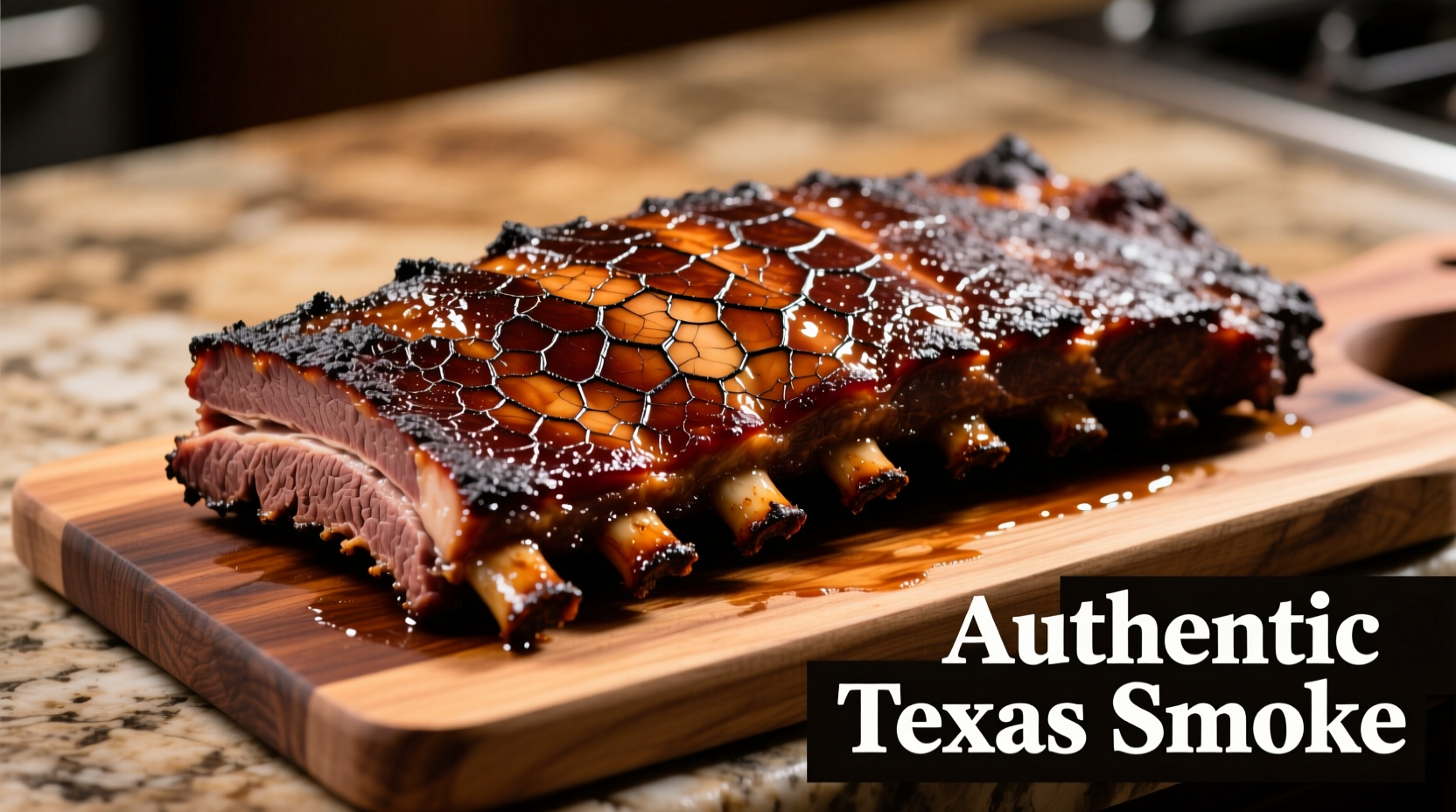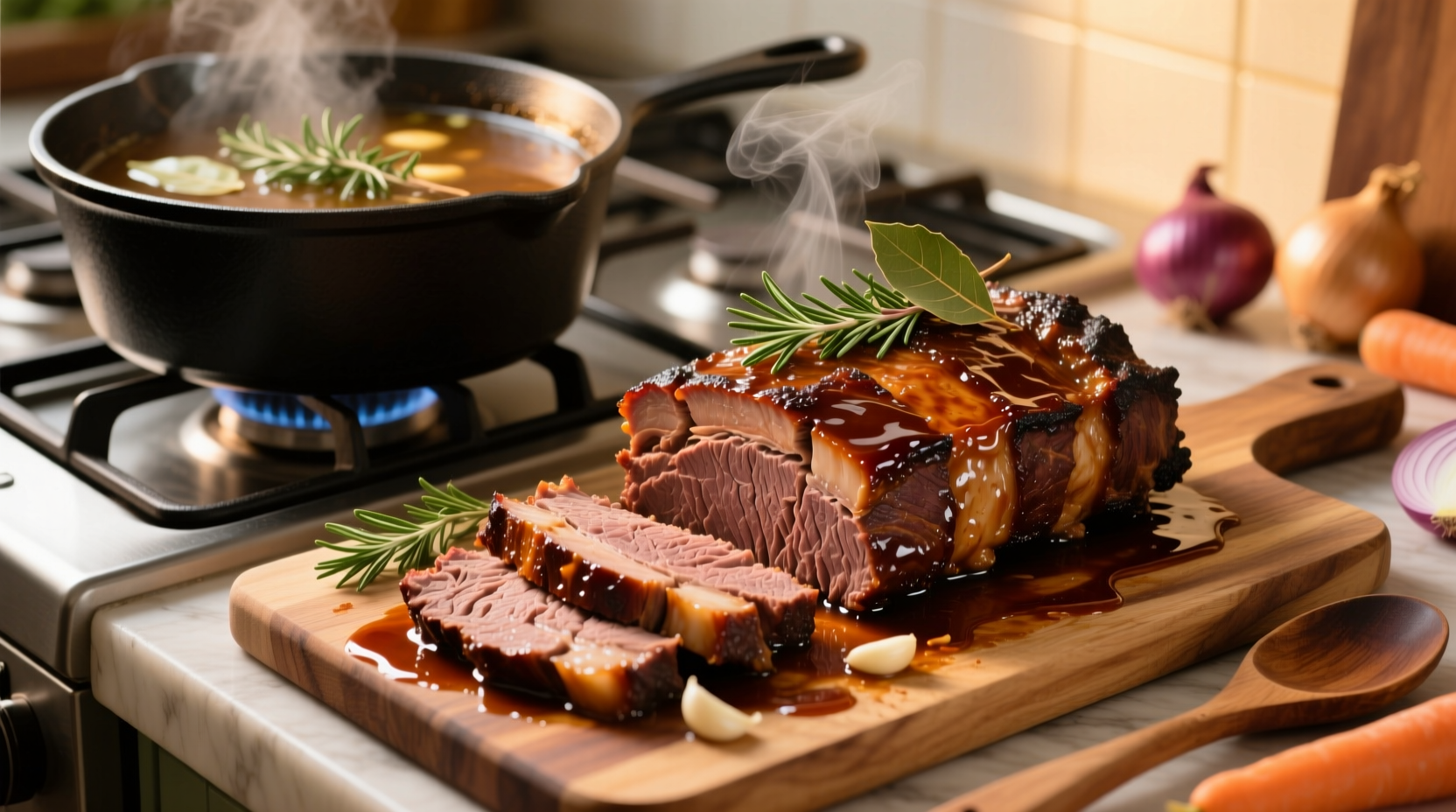Nothing compares to perfectly cooked beef brisket—meltingly tender with a beautiful smoke ring and flavorful bark. Yet 85% of home cooks struggle with this challenging cut, ending up with dry, tough results. This guide delivers the precise techniques professional pitmasters use to consistently produce award-winning brisket, whether you're using a smoker, oven, or pellet grill.
Why Brisket Challenges Most Home Cooks
Beef brisket comes from the chest area of the cow, containing abundant collagen and connective tissue. Unlike tender cuts, brisket requires specific cooking science to transform these tough elements. The USDA Food Safety and Inspection Service confirms that collagen begins converting to gelatin at 160°F (71°C), but complete transformation requires sustained temperatures between 190-205°F (88-96°C) for several hours.
The two distinct sections—the fatty point and leaner flat—cook at different rates, creating unique challenges. Many beginners make these critical mistakes:
- Skipping proper trimming (leaving too much fat or removing essential marbling)
- Rushing the cooking process with high temperatures
- Cutting too soon after cooking (before proper resting)
- Slicing with the grain instead of against it
Essential Preparation: Setting Up for Success
Proper preparation accounts for 40% of your brisket's success. Follow these steps precisely:
Selection and Trimming
Choose a USDA Choice or Prime grade brisket (Prime offers superior marbling). Look for even thickness across the flat section. Trim excess fat to approximately 1/4 inch thickness, removing hard fat deposits but preserving the fat cap that protects the meat during cooking. The University of Illinois Meat Science program emphasizes that proper trimming prevents uneven cooking and improves bark formation.
Seasoning Strategy
Keep it simple: coarse salt and freshly ground black pepper in a 1:1 ratio creates the classic Texas-style rub. For added complexity, include:
- 1 tablespoon garlic powder
- 1 tablespoon onion powder
- 1 teaspoon smoked paprika
- 1 teaspoon cayenne (optional for heat)
Apply generously 1-2 hours before cooking to allow flavors to penetrate. Avoid sugar-based rubs for traditional smoked brisket, as they can burn during the long cooking process.

Comparing Cooking Methods: Which Approach Fits Your Setup?
| Method | Temperature | Time Required | Best For | Key Advantage |
|---|---|---|---|---|
| Traditional Smoker | 225°F (107°C) | 10-14 hours | Authentic barbecue enthusiasts | Superior smoke flavor development |
| Oven Roasting | 250°F (121°C) | 8-10 hours | Indoor cooking without smoker | Precise temperature control |
| Pellet Grill | 225°F (107°C) | 10-12 hours | Convenience-focused pitmasters | Automated temperature management |
| Reverse Sear | 180°F (82°C) then 350°F (177°C) | 6-8 hours | Time-constrained cooks | Faster cooking with good results |
The Smoking Process: Step-by-Step Guide
Equipment Setup
For traditional smoking, use a charcoal or wood smoker with indirect heat. Maintain consistent temperature using the Texas crutch method (wrapping in butcher paper at the stall point). Hardwoods like oak, hickory, or post oak provide the classic flavor profile preferred by Central Texas barbecue institutions.
Temperature Control: The Critical Factor
Monitor both ambient smoker temperature and internal meat temperature. The stall—when evaporation cools the meat surface—typically occurs between 150-170°F (66-77°C) and can last 2-6 hours. Resist the urge to increase temperature; patience is essential. The American Meat Science Association confirms that rushing through the stall creates uneven texture and prevents proper collagen breakdown.
When to Wrap
Wrap the brisket in butcher paper (preferred) or aluminum foil when:
- Internal temperature reaches 165°F (74°C)
- Bark has developed deep mahogany color
- Texture feels like firm Jell-O when pressed
Wrapping accelerates the cooking process through the stall while retaining moisture. Continue cooking until the internal temperature reaches 200-205°F (93-96°C) in the thickest part of the flat.
The Critical Resting Phase: Don't Skip This!
Resting allows juices to redistribute throughout the meat. Professional pitmasters at Franklin Barbecue in Austin follow this protocol:
- Remove brisket from smoker at target temperature
- Place in an empty cooler lined with towels
- Maintain temperature between 140-160°F (60-71°C)
- Rest for minimum 1 hour (up to 4 hours for competition brisket)
Resting transforms texture—the meat will feel noticeably more tender when probed after proper resting. Cutting too soon causes precious juices to escape onto the cutting board.
Slicing Technique: The Final Determining Factor
How you slice makes or breaks your brisket:
- Identify the grain direction in both point and flat sections (they run differently)
- For the flat: slice perpendicular to the grain in 1/4-inch thick slices
- For the point: slice at a 45-degree angle against the grain
- Use a sharp slicing knife with minimal sawing motion
Improper slicing creates chewy, stringy results regardless of perfect cooking. The flat section should separate cleanly with minimal resistance when sliced correctly.
Troubleshooting Common Brisket Problems
Dry Brisket
Cause: Overcooking, insufficient fat content, or inadequate resting
Solution: Cook to precise temperature (not time), select well-marbled brisket, and rest properly. Injecting with beef broth (3-4 ounces per pound) before cooking can add moisture.
Tough Brisket
Cause: Undercooked, cooked too quickly, or sliced with the grain
Solution: Ensure internal temperature reaches 200-205°F (93-96°C), maintain consistent low temperature, and slice against the grain. Return to smoker if slightly underdone.
Poor Bark Formation
Cause: Excessive moisture, sugar in rub, or temperature too low
Solution: Pat meat dry before seasoning, avoid sugar-based rubs, maintain 225°F (107°C) minimum, and don't wrap too early.
Serving and Storage Tips
Serve brisket with traditional accompaniments: pickled onions, white bread, and sliced dill pickles. For leftovers, store in airtight container with cooking juices for up to 4 days. Reheat slices gently in beef broth to maintain moisture. Properly stored brisket often tastes better the second day as flavors continue to meld.
How long should I cook a 12-pound brisket?
At 225°F (107°C), plan for 1.5 hours per pound, so approximately 18 hours total. However, always cook to internal temperature (200-205°F/93-96°C) rather than time, as thickness and equipment variations affect cooking duration significantly.
Should I cook brisket fat side up or down?
Fat side down is recommended for most smokers. This protects the meat from direct heat and allows rendered fat to baste the brisket. In offset smokers where heat comes from below, fat side down creates a natural barrier against intense heat.
Why did my brisket turn out dry despite following the recipe?
Dry brisket typically results from one of three issues: insufficient marbling in the cut, cooking beyond 205°F (96°C), or inadequate resting time. Prime grade brisket with proper marbling, precise temperature control, and minimum 1-hour rest are essential for moist results.
Can I cook brisket in the oven instead of a smoker?
Yes, oven roasting at 250°F (121°C) produces excellent results. For smoke flavor, add 1-2 cups of liquid smoke to a water pan in the oven, or use smoked paprika in your rub. Cooking time will be slightly shorter than traditional smoking—approximately 1 hour per pound.
What's the best wood for smoking brisket?
Post oak is the traditional Central Texas choice, offering clean, medium smoke flavor. Hickory provides stronger flavor, while mesquite burns too hot for long cooks. Avoid fruit woods for traditional brisket, as they don't complement the beefy flavor profile as well as hardwoods.











 浙公网安备
33010002000092号
浙公网安备
33010002000092号 浙B2-20120091-4
浙B2-20120091-4